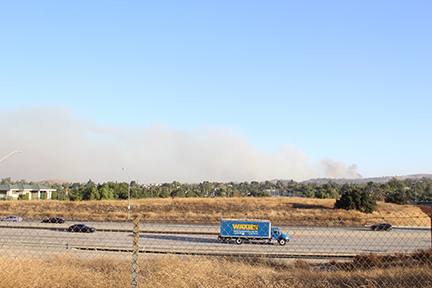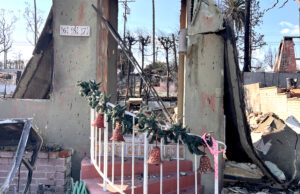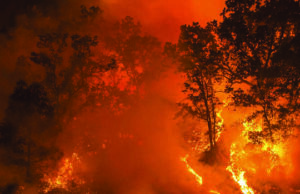First responders work to fight fires

First responders first received notice of a developing brush fire early morning on Oct. 30. Beginning in Northern Simi Valley, it had spread into Moorpark within a few hours. At its peak, more than 7,000 structures were threatened, including the Ronald Reagan Presidential Library. The following evening, the Maria fire began atop South Mountain in Santa Paula, a mere 12 miles away. 10,000 acres of land were burned over the course of its activity.
Due to a shift in the winds and the effort of the first responders, VCFD (Ventura County Fire Department) Public Information Officer Mike Deforges expected that the task was nearing its end correctly, as the fires are both completely contained as of Nov. 7.
Assistant Principal Kelly Welch was one of 30,000 people ordered to evacuate for the Easy Fire Wednesday afternoon. “When I woke up in the morning and saw the fire on the news, and saw the direction…how fast it was going with the winds, I anticipated that I was going to get evacuated,” Welch said.
Welch was confident that the fire department had it under control. “We knew that they were gonna get a good handle on it,” she said.
It was the combined efforts of the VCFD and the NWS (National Weather Service) have aided in reducing what could have led to catastrophic aftermath.
NWS Forecaster Ryan Kittell has spent these past weeks monitoring the status of fires with the aid of weather satellites. “Fires from these satellite sensors show up as ‘Hot spots’ which allows us to detect new fires and monitor the growth of established fire,” Kittell said. “This information helps firefighters anticipate how and where a fire will grow and spread.”
The primary cause of these disasters, as well as the Camp and Woolsey fires last year, can be derived from the dry, off-shore gusts known as Santa Ana winds. As air is pressurized from within the Great Basin, this forms compressed warm, dry winds that can reach 100 mph and results in extremely low humidity, which is the ideal atmosphere for wildfires to spread quickly.
With both fires entirely contained, the fire department’s focus is to restore the area back to its prior condition. “Crews are up there chopping those trees so that they don’t fall and injure a firefighter or a citizen returning home,” Deforges said. “Just kind of controlling for general hotspots, pieces of smouldering material that might still be left over.”
Although it is a harsh reality, the likelihood of there being more fires in the recent future is high, meaning it is crucial to be aware. “Definitely stay in the know,” Deforges said. Deforges encourages taking advantage of the emergency resources available through the fire department, including the Pulse Point app. “Download it, and select Ventura County Regional Dispatch. You’ll be able to see all of the calls. . .for brush fries in particular,” Deforges said. “You’ll get a notification if that kind of call comes up.”
Last November, the Camp fire devastated several Northern California cities, causing it to be titled the most destructive wildfire in the state’s history. Similarly, the Woolsey fire swept through parts of Ventura and Los Angeles county last fall, leading to evacuations of nearly 300,000 people and extended school closures within CVUSD and beyond.



